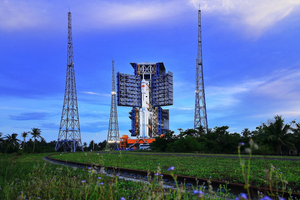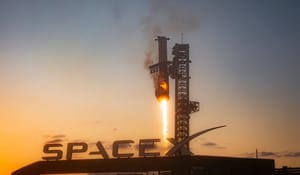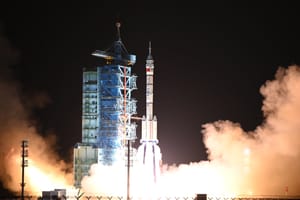
Nov 3, 2023
Who will be China's SpaceX?
Disclaimer: This article contains the opinion of the writer and not Cosmic Nxws as a whole.
Recently private spaceflight efforts in China have been ramping up from almost a dozen companies. This article will cover four companies I believe stand a good chance of becoming China's equivalent of SpaceX in the coming years.
LandSpace
LandSpace is a relatively well-known Chinese aerospace company after it reached orbit with its methane-fueled Zhuque-2 rocket. Zhuque-2 is a liquid-fueled rocket that burns liquid oxygen and liquid methane, and is capable of launching up to 6,000 kilograms into low Earth orbit or 4,000 kilograms into sun-synchronous orbit.
LandSpace is also looking to improve its launch capabilities so they can launch over one-hundred times a year and deliver one-thousand tons to low Earth orbit. The company is also looking to upgrade Zhuque-2 to improve its lift capabilities to carry more tonnage to orbit with fewer rockets.

Galactic Energy
Galactic Energy is a lesser-known Chinese aerospace company founded in February 2018 and frequently flies its Ceres-1 rocket. Ceres-1 is a solid and liquid-fuelled rocket burning solid propellants and hydrazine, and can launch up to 400 kilograms into low Earth orbit or 300 kilograms into sun-synchronous orbit.
Galactic Energy has the long-term goal of capturing and mining asteroids which will require either a high flight rate of medium-lift launch-vehicles or several heavy-lift launch-vehicles. The company is currently working on a Falcon 9 like vehicle called Pallas-1 and Falcon Heavy like vehicle called Pallas-2.

i-Space
i-Space is likely the least known Chinese aerospace company of the three despite being founded seven years ago in 2016. i-Space currently flies the Hyperbola-1 solid and liquid-fuelled rocket which can launch up to 300 kilograms into low Earth orbit.
i-Space is currently developing a methane-fuelled two-stage reusable launch vehicle called Hyperbola-2. Hyperbola-2 is currently undergoing a series of 'hop tests' ahead of an orbital launch attempt, the most recent 'hop test' had the Hyperbola-2 test vehicle reach a height of one-hundred and seventy-eight meters and land safely. When operation Hyperbola-2 will be able to lift 1,900 kilograms to low Earth orbit.

State-owned launch Corporations
While not entirely fair to include state-owned corporations it should be noted that they are not run like NASA or ESA. The state-owned corporations are run like companies but with the support of the state as they are viewed as important parts of national security and vital for infrastructure.
China's state-owned corporations already have a long track record of launching payloads, almost five-hundred launches from the Long March series, safely to orbit. There are currently sixteen operational variants in the Long March series of rockets, filling nearly every niche for payloads in the Chinese market, with two super-heavy lift launch vehicles in development for launching heavy spacecraft towards the Moon.
State-owned corporations are also actively working towards reusable rocket stages with some first stages spotted with grid fins, presumably for controlled descent tests. It should also be noted that state-owned corporations have experience competing with the international launch market, including launching American spacecraft a few decades ago.

All four of these companies stand a good chance of becoming a Chinese SpaceX but requires them to do a few things. One, offer an affordable ride to orbit. Two, have a reliable launch vehicle. And finally, capture a large amount of demand from the Chinese launch market, with some payloads from foreign companies. All of those assume that it is left up to customer demand to decide with no support from the Chinese government which may realize the country needs an affordable and rapidly available way to orbit.
In conclusion, it is still anyone's game to dominate China's commercial launch market and be a potential competitor to SpaceX.



